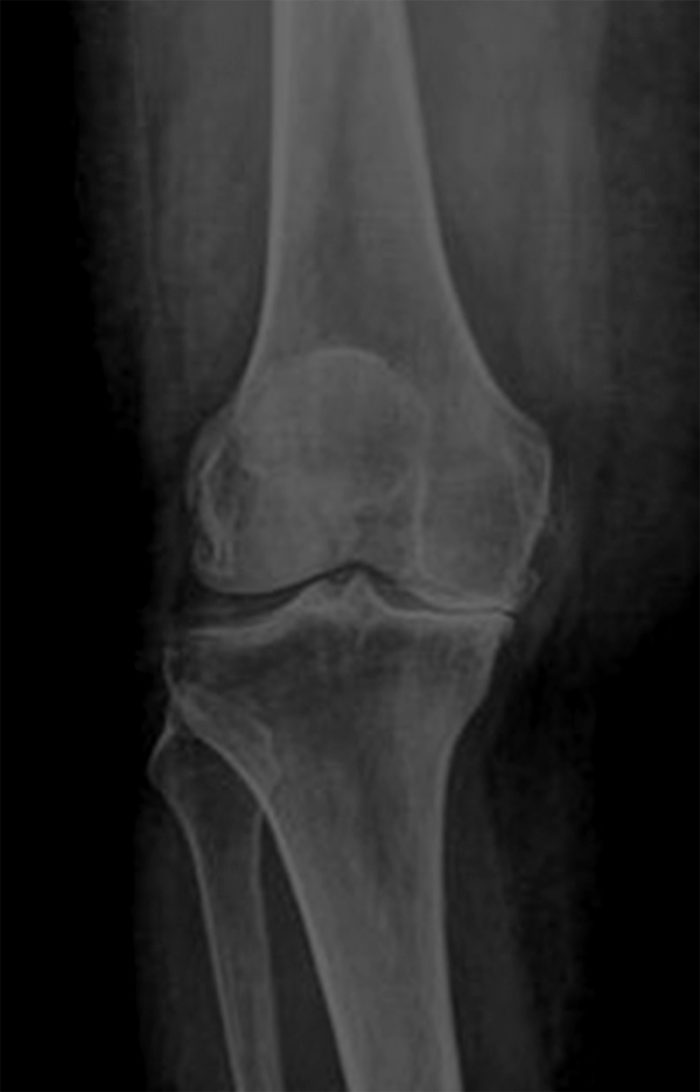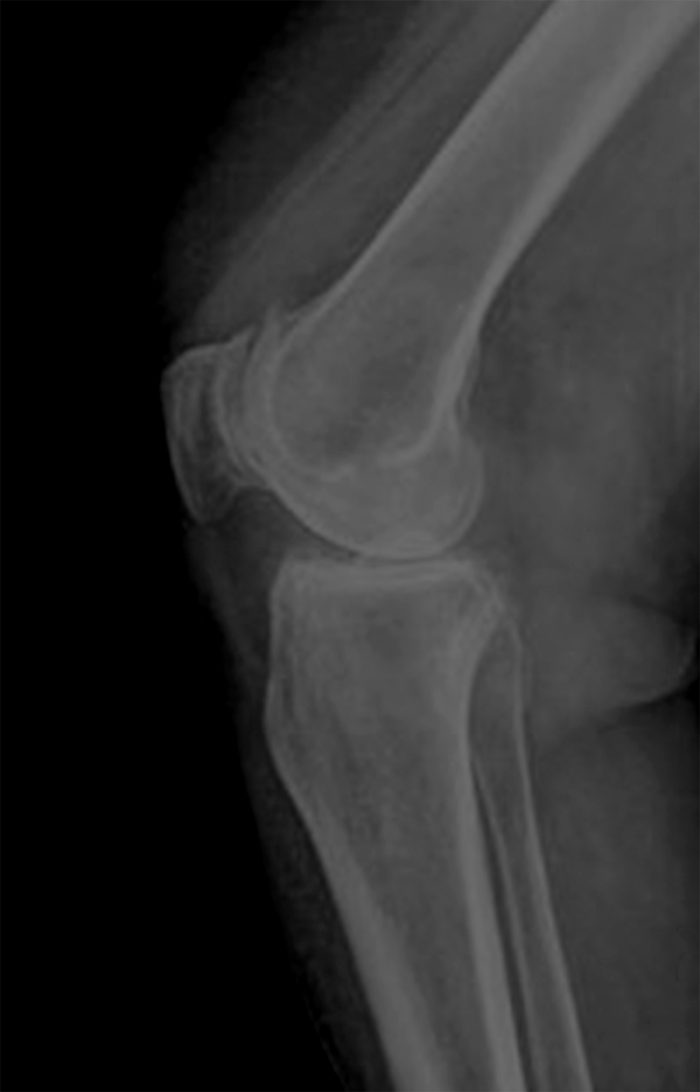What are the causes of knee osteoarthritis ?
Knee osteoarthritis can be “primitive”, meaning that there are no apparent causes other than age-related cartilage degeneration.
It can also be “secondary”, in the presence of a number of factors, including:
- Excess weight
- An inactive lifestyle
- Joint stress (work/sports related)
- Poor alignment and instability of the lower limbs
- Previous injury (ex. meniscal tear)
What are the symptoms ?
The following symptoms can indicate the presence of knee osteoarthritis:
- Acute joint stiffness when standing up or following a period of inactivity (duration: less than 30 minutes)
- Progressive loss of flexibility in the knee
- Sensitivity to touch or to slight pressure
- Pain during movement in which the knee supports weight (relieved by rest)
Diagnostic imaging of knee osteoarthritis reveals diminished space between the femur and tibia—in cases, even direct contact.
Generally, knee osteoarthritis evolves at a slow, progressive rate, with periods of acute suffering lasting anywhere from a few days to several weeks. It is accompanied by painful relapses and episodes of water on the knee.
What are the treatments ?
What treatments exist to relieve pain associated with knee osteoarthritis?
A “cure” for knee osteoarthritis does not yet exist. However, several methods and treatment options help to reduce the associated pain, including:
- Modification to pain-related activities (reduction in jogging, standing, walking, going up and down stairs; increased activity in the pool and on stationary exercise machines)
- Adoption of an appropriate exercise program and proprioception
- Nutrition and weight-loss programs
- Medications (analgesics and anti-inflammatories)
- Injections (viscosupplementation)
- 3-point knee orthotic devices (braces)
- OdrA knee orthotic devices
- Custom-fitted shoe orthotics (inserts)
- Total knee replacement surgery
While there is no curative treatment (with the exception of total knee replacement or “arthroplasty”), orthotic devices provide a number of benefits, including pain relief and increased stability, which permit the resumption of daily activities. Consult your doctor to find out about the best treatment options for your circumstances.


